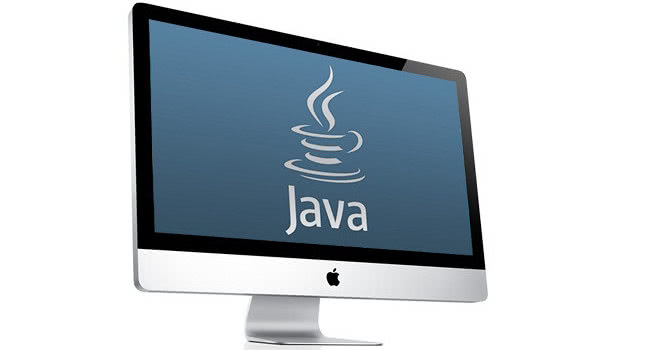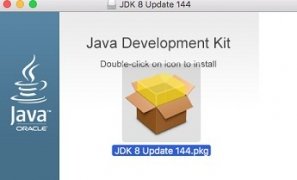Installing Java 8 and Eclipse on Mac OS X. This page tells you how to download and install Java 8 and Eclipse on Mac OS X, and how to configure Eclipse. Installing Java 8. Go to the Oracle website. You'll see something like this. Java 8 mac free download - Java Update for Mac OS X 10.3.9, Apple Java for OS X 10.6, Mac Video Downloader, and many more programs.
Java is no longer installed with a OS X 10.11 El Capitan clean install, and you’ll find that after updating a Mac a prior version of JRE may no longer function.
You may come across when trying to use some particular applications or web content, “This application requires the legacy Java SE 6 runtime which is unavailable for this version of OS X.” error message, which means if you want to run that app you’re going to need to use an older version of Java.
If you do not need Java, you should not install Java. Java is, and always has been, the source of many security holes.

Here’s how you can install JRE (Java Runtime Environment).
Step 1. Open Safari and go to the Oracle Java downloads page and download the JRE .tar.gz version. You should end up with a file named something similar to jre-8u65-macosx-x64.tar.gz.
Step 2. Go to your Downloads folder and extract the JRE download or use Terminal to extract files:
Step 3. Open Terminal
Step 4. Edit the Info.plist file within to enable the JRE to be used from the the command line, and from bundled applications:
Download Java Jdk For Mac
Step 5. Move the JRE folder to the correct location:
Type password on prompt.
Be sure you are in the correct directory (the JRE folder) when you issue this command, because it will move your current directory to /Library/Java/JavaVirtualMachines/!
Step 6. Create a link to add backwards compatibility for some applications made for older Java versions:
You should be done now, so try and open the application. If it does not work, some applications require legacy Java 6 to be installed.
You can have it installed without actually using it, however, it’s possible to trick the applications into thinking legacy Java 6 is installed, without actually doing so.
Step 1.Disable SIP (System Integrity Protection) in OS X El Capitan. Here is tutorial to disable and enable SIP.
Step 2. Trick some applications into thinking that legacy Java 6 is installed by creating two folders with the following commands in Terminal:
Step 3. Don’t forget to enable SIP again after creating these directories.
YouTube
How to Update to Java 8 on a Mac
* For Use with Safari 11 or Earlier*
* Please note that we do not support versions of Java beyond Java 8, Update 121. *
* Please note that Safari 12 or later will not work with Banner ERP. *
1) Find out which version of Java you have. Note: Not all Macs have Java installed on them. If you don't see a Java icon in your 'System Preferences' panel, go to step 4.
- Click on the Apple icon in the upper left-hand corner of your screen.
- Click on System Preferences.
- Click on the Java icon (in the bottom row of icons below):
- When the Java Control Panel opens, click on the General tab, then on the About button to determine the version and update of Java you currently have (e.g. Java 7, Update 71.)
2) If you have Java 8, Update 121, go to step 5.
4) Using Safari, log into MyWellesley. Then download Java 8 by clicking here.

- Double-click on the 'golden box' icon and follow Apple's instructions to install Java:
- If you see, 'Java 8 Update 121 is an application downloaded from the Internet. Are you sure you want to open it?', click Open.
- Follow the prompts to install Java.
- If a 'Verify Java Version' window appears,close it.
5) Change several Java settings on the Java Control Panel.
Java 8 For Macbook Pro
- Click on the Apple icon in the upper left-hand corner of your screen.
- Click on System Preferences.
- Click on the Java icon (go back to Step 1 if you'd like to see a screen shot of the Java icon).
- Once the Java Control Panel appears, click on the Update tab.
- Uncheck 'Check for updates automatically', then click on Do Not Check.
- Click on Apply, enter your local computer password, then click on OK.
- Click on the Security tab.
- Change the security level to High.
- Click on the Edit Site List button and add the following sites (do not click on the links below; simply copy and paste the text from the links below into the site list):
- Banner ERP: https://bannererp.wellesley.edu:4452
- Test version of Banner ERP: https://testban8erp.wellesley.edu:10123
- NolijWeb: https://imaging.wellesley.edu
- Test version of NolijWeb: https://imaging-test.wellesley.edu
Click on Apply, then click OK.
- Click on the Advanced tab.
- In the 'Java Console' section, select Do not start console.
- In the 'Mixed code (sandboxed vs. trusted) security verification' section, select Enable - hide warning and run with protections.
- In the 'Advanced Security Settings' section, be sure only the items below are checked. Then click Apply.
- Click Apply, then OK.
- Close the Java Control Panel.

6) Log out of MyWellesley.
7) Close Safari, then reopen it in order to refresh it.

8) Log back into MyWellesley.
9) Banner ERP users only: Open Banner ERP.
- If you see a message that says, 'Java out-of-date', click on the 'Java out-of-date' portion of the message button, not the arrow.
- If you see a message that says, 'Click to use Java',click on the 'Click to use Java' portion of the message button, not the arrow.
- If you're asked, 'Would you like to use Java on 'bannererp.wellesley.edu'?', click on Use Every Time.
- If you see a message that says your Java version is out of date, check 'Do not ask again until the next update is available' and click on Later.
- If you see an 'Activate Java Applet' link, click on the link:
- If you're asked to allow bannererp.wellesley.edu to run 'Java Applet', click Allow and remember.
- If you're asked, 'Do you want to run this application (OracleForms)?', click on 'I accept the risk and want to run this application', then click Run.
- If you're asked, 'Block potentially unsafe components from being run?', click Don't Block.
- If you're asked if you want to run this application, click Run.
- At this point, you should be able to log into Banner ERP. If you are unable to do so, please call the Help Desk at x3333.
